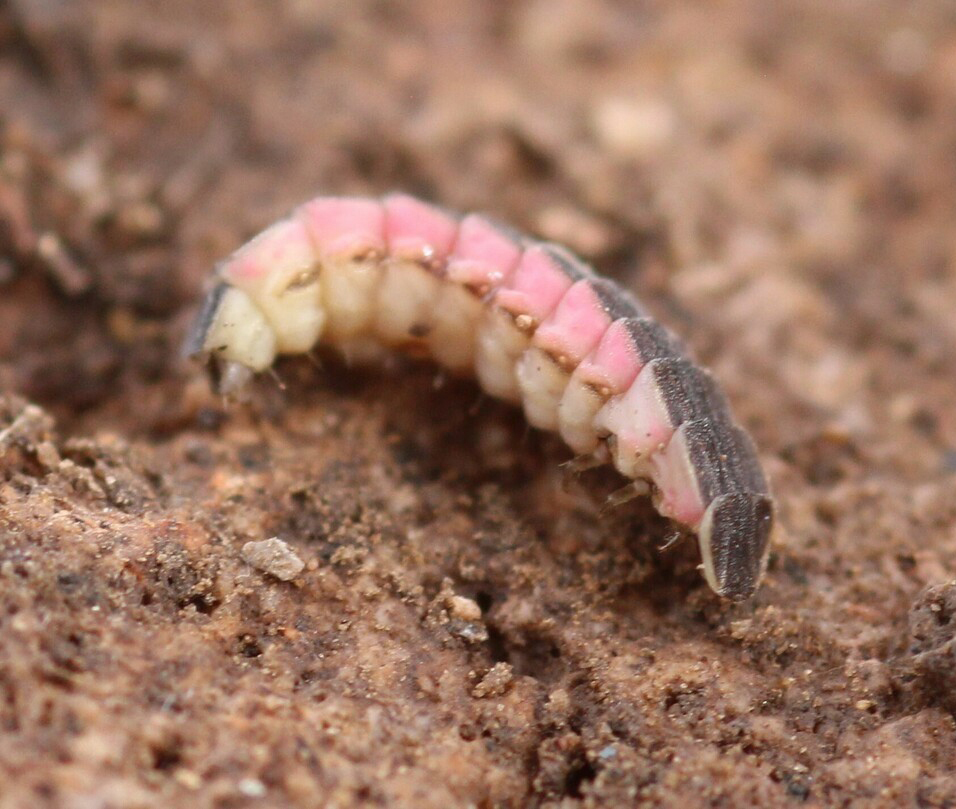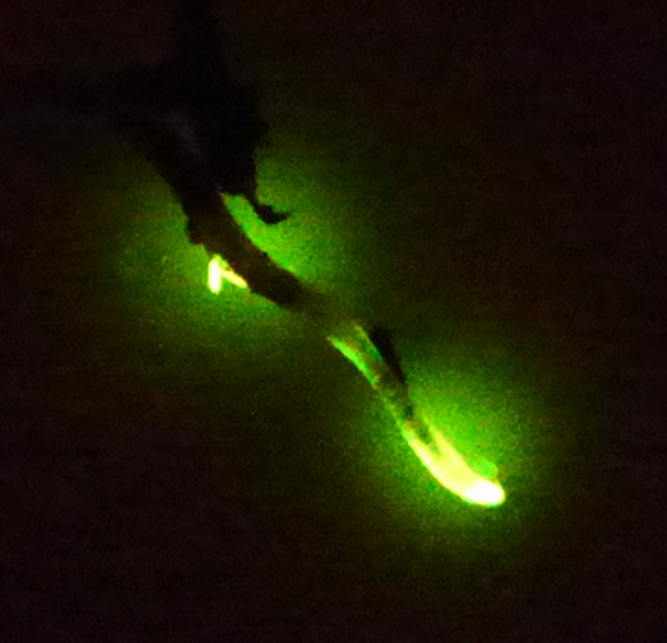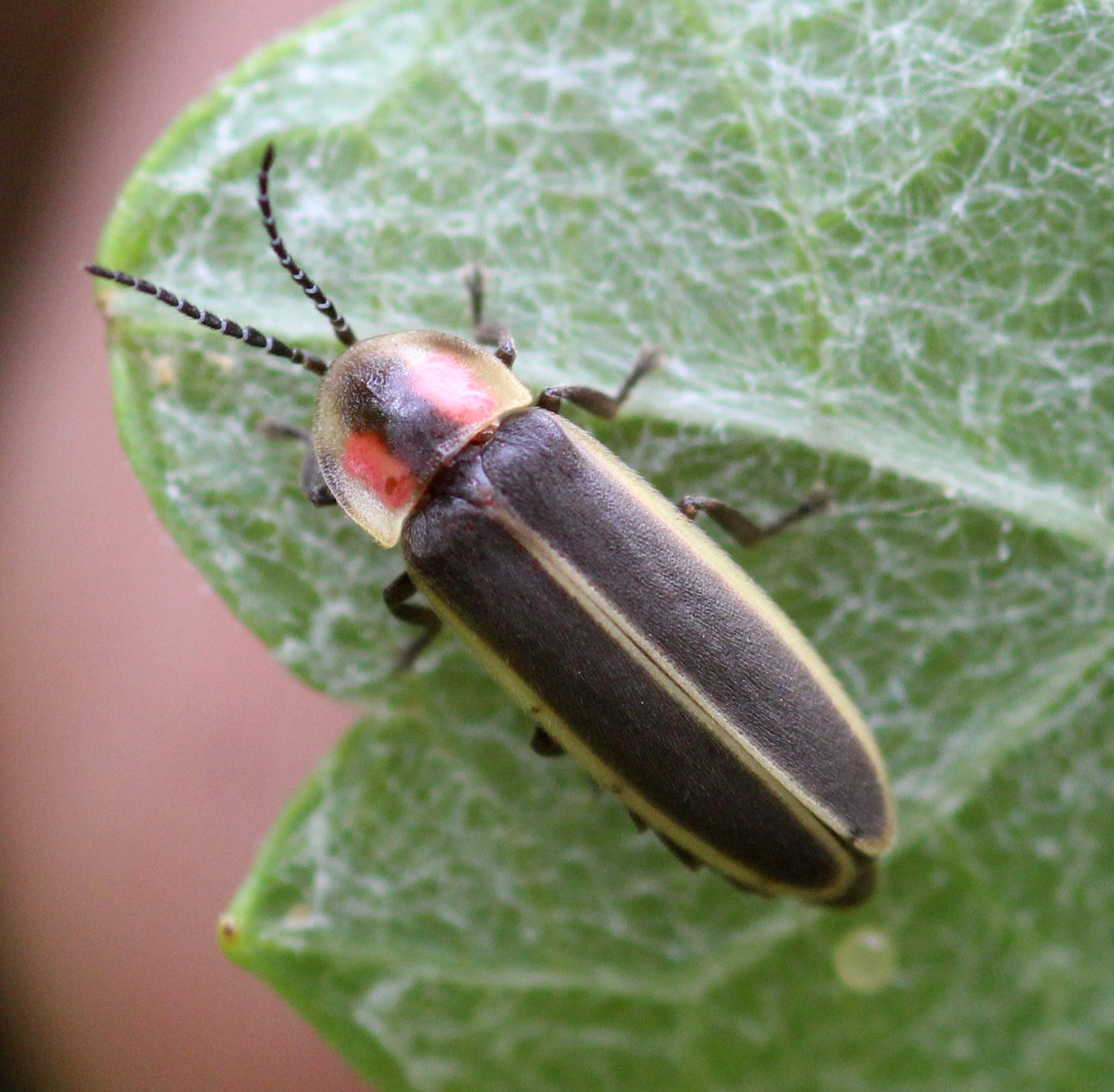Last updated: May 17, 2023
Article
Insect Conservation in the National Parks: The Glowworms of Tumacácori Would Like a Word

Southwest synchronous fireflies at Tumacácori NHP.
Photo by Julius Schlosburg (used with permission)
“Worms that secrete bioluminescent fluids.” In my career as a National Park Service science writer, that’s not a phrase I ever expected to be researching—or writing an article about.
But why not? My recent conversation with biologist Tony Palmer illuminated the gap between the fundamental role of invertebrates in our ecosystems and their frequent lack of inclusion in wildlife conservation efforts—and NPS interpretation.
Invertebrates comprise more than 90% of Earth's animal species, and all but 10% of known invertebrates are insects (arthropods with three body segments, three pairs of jointed legs, and paired wings). It’s estimated that at any given time, about 10 quintillion (10,000,000,000,000,000,000) individual insects are flying, crawling, and burrowing around the planet.1 Insects pollinate the plants that feed us. They are the foundation of the animal food chain and play a key role in decomposition and nutrient cycling. If we paid insects market value for their ecological services, the bill would be at least $3.5 trillion per year.2
More importantly, invertebrates make our world livable. Without them, “You would certainly have mass starvation [and] societal unrest. . . . It'd be a place where there would be rotting feces and corpses everywhere because dung beetles and other insects that break down those materials would be gone,” as environmental writer Oliver Milman has put it.3

Our learned negative response to "creepy-crawlies" poses
challenges for insect conservation efforts. NPS/Tony Palmer
But like so many other species, insects are in decline. Amid human-driven climate change, pesticide use, light pollution, and habitat loss, it is estimated that 40% of the world’s insect species may go extinct in a few short decades, leading many observers to predict an “insect apocalypse.”4
So given their importance to humanity—and their need for conservation—why don’t we hear more about invertebrates in the National Park System? In some sense, their ubiquity hides them in plain sight. In a narrative of majestic landscapes, charismatic megafauna, and irreplaceable historical treasures, it can feel counterintuitive to devote bandwidth to bugs people can find in their own backyards. Also, bugs. Like wolves and bats, insects suffer from a largely ill-deserved bad reputation.5 Their visual difference from us makes them seem foreign and unknowable—and we’re conditioned from a young age to view them as creepy, crawly, tiny enemies that deserve the bottom of our boot.
One notable exception is pollinators—popular both because they are widely known to do a job that keep humans alive and they are often beautiful. It’s also easy to give aquatic insects a pass, because they feed the fish we like to catch. And of course there are the synchronous fireflies of Great Smoky Mountains National Park. Almost 250,000 people visited their webpage last year. If you want to be a bug people care about, it helps to be able to put on a show.
Enter the glowing worms of Tumacácori National Historical Park.
To continue the story, listen to the audio clip below or read its transcript.
-
Finding the Glowing Worms
Tumacacori NHP biologist Tony Palmer describes how glowing worms were recently found at the park.
As Tumacácori’s biologist, Tony Palmer took one of the worms back to his office to examine it more closely. When that didn’t teach him anything new, he toyed with the idea of sending the sample to a lab for identification. But then a friend stopped by the park . . .
To continue the story, listen to the audio clip below or read its transcript.
-
Solving the Mystery
Tumacacori NHP biologist Tony Palmer describes learning that some earthworms bioluminesce.

Microscolex phosphoreus in a lab after stimulation with ethanol. Photo by Emilia Rota (used with permission).
But it wasn’t the worms, themselves, that were glowing. Microscolex phosphoreus experience the same kind of chemical reaction as fireflies—but they store the luminescent substance in their celom (main body cavity) and, when threatened, eject it. The greenish-blue luminescence becomes part of their slime coat and is left behind as the worm tries to retreat underground. An earthworm bait-and-switch.
Microscolex phosphoreus are found in habitat pockets around the world—typically in cold, wet environments. At Tumacácori, they’re seen only on evenings when the temperature is below about 50°F, and only in the mesquite bosque. Their presence here is likely due to the nearby Santa Cruz River. Bolstered by treated effluent from the nearby Nogales International Wastewater Treatment Plant, the river’s consistent flow helps maintain a lush riparian corridor.
The worms are detectable because managers intentionally protected the park’s dark skies. In 2018, the International Dark Sky Association certified Tumacácori as its 100th International Dark Sky Park. This is not only an honor, but also a responsibility—to maintain its dark-sky park status, the park has to keep light pollution below certain levels, which means using night-sky-friendly lighting and a host of other measures. But when a park manages for its dark-skies resource, there are many other benefits. One is being able to host dark-sky events for visitors, like the one at which the Microscolex were found. Another is that conditions are preserved for animals that use the stars to navigate (like baby sea turtles), or require darkness for other functions, like the mating habits of fireflies—also found in Tumacácori’s mesquite bosque.
 Adult Photinus knulli. NPS/Tony Palmer
Adult Photinus knulli. NPS/Tony PalmerFireflies in southern Arizona? Yep, it’s a thing. After finding one during a bioblitz at Tumacácori in 2017, Palmer learned that Arizona is known to have four flashing species of fireflies. Tumacácori is host to Photinus knulli, the southwest synchronous firefly. This diminutive (5–8 mm) insect, like other Arizona fireflies, is typically found “near permanently wet areas of dry habitats.”6 But also like other Arizona fireflies, it is considered vulnerable to extinction from habitat loss and climate change, which threatens to dry up the wet areas they rely on. Other threats include pesticide use, invasive plants, and land disturbance—because the larva live underground, soil tilling or compaction can be lethal at certain times of year. All of this makes the protected, dark landscapes of Tumacácori and other national parks especially valuable to these animals.
Conserving invertebrates means raising awareness—and winning over hearts and minds. Palmer is currently reaching out to local indigenous communities in search of any stories and knowledge they may have about fireflies along the Santa Cruz or Rillito rivers. He is also helping plan Tumacácori’s first-ever synchronous-firefly viewing events, scheduled to happen in July 2023. Convincing people to stop seeing insects as pests to swat, stomp, spray, or incinerate, and start seeing them as the animals upon which all others depend, is a larger project, but an important one. In many states, including Arizona, even popular bugs like monarch butterflies and bumblebees are hard to conserve because state laws do not classify insects as wildlife.7 This makes it difficult—if not illegal—for state agencies to dedicate funds to insect conservation.
Expanding the definition of wildlife is one way for states to help conserve insect populations. The National Park Service can help by increasing their study and interpretation. The Inventory & Monitoring division is working with a group of “pollinator hotshots” to survey pollinators in multiple parks, and there is good information available at the Insects & Invertebrates subject site. But just a handful of parks have webpages dedicated to park insects, and Tumacácori is rare for having an entomologist on staff (let alone two—superintendent Mike Medrano is an expert on millipedes). Working across park boundaries to identify, conserve, and elevate the profile of shared species is another way parks can contribute to invertebrate conservation. Palmer has been contacting staff at other parks known to have fireflies in an effort to consolidate knowledge and effort, and move toward shared action. But as a start, his hope is that more staff around the National Park System will take the time to recognize their amazing invertebrate diversity—then help spread the word that “insects are animals, too.”
1 https://www.si.edu/spotlight/buginfo/bugnos
2 https://nrd.kbic-nsn.gov/sites/default/files/fs_Importance%20of%20Insects.pdf
3 https://www.npr.org/sections/goatsandsoda/2022/02/24/1082752634/the-insect-crisis-oliver-milman
4 https://www.sciencedirect.com/science/article/abs/pii/S0006320718313636
5 Granted that biting insects are endlessly annoying and can carry mortal and debilitating diseases. But is it really fair to blame 10 quintillion creatures for a few bad actors in their midst?
6 https://xerces.org/endangered-species/species-profiles/at-risk-beetles/sw-synchronus-firefly
7 https://xerces.org/blog/insects-are-wildlife-too
